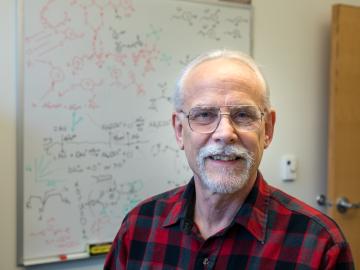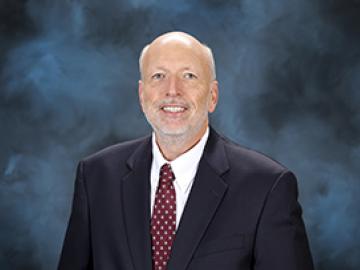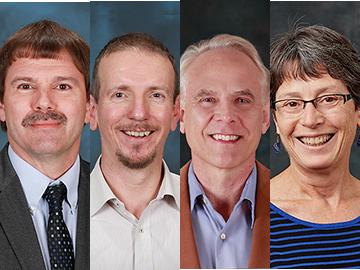
Filter News
Area of Research
- (-) Energy Sciences (2)
- (-) Materials (186)
- Advanced Manufacturing (7)
- Biological Systems (3)
- Biology and Environment (119)
- Biology and Soft Matter (4)
- Building Technologies (3)
- Chemical and Engineering Materials (3)
- Chemistry and Physics at Interfaces (7)
- Clean Energy (208)
- Climate and Environmental Systems (7)
- Computational Biology (1)
- Computational Chemistry (5)
- Computational Engineering (2)
- Computer Science (4)
- Data (1)
- Earth Sciences (1)
- Electricity and Smart Grid (2)
- Energy Frontier Research Centers (7)
- Fuel Cycle Science and Technology (2)
- Functional Materials for Energy (10)
- Fusion and Fission (43)
- Fusion Energy (7)
- Geographic Information Science and Technology (1)
- Isotopes (24)
- Materials Characterization (2)
- Materials for Computing (17)
- Materials Synthesis from Atoms to Systems (8)
- Materials Under Extremes (8)
- National Security (53)
- Neutron Data Analysis and Visualization (2)
- Neutron Science (83)
- Nuclear Science and Technology (35)
- Quantum Condensed Matter (3)
- Quantum information Science (5)
- Renewable Energy (2)
- Sensors and Controls (2)
- Supercomputing (172)
- Transportation Systems (6)
News Type
News Topics
- 3-D Printing/Advanced Manufacturing (10)
- Advanced Reactors (3)
- Artificial Intelligence (7)
- Big Data (2)
- Bioenergy (6)
- Biology (2)
- Biomedical (2)
- Buildings (2)
- Chemical Sciences (14)
- Clean Water (2)
- Climate Change (3)
- Composites (3)
- Computer Science (12)
- Coronavirus (1)
- Critical Materials (1)
- Cybersecurity (3)
- Decarbonization (2)
- Energy Storage (15)
- Environment (10)
- Exascale Computing (1)
- Frontier (2)
- Fusion (4)
- Grid (3)
- High-Performance Computing (3)
- Irradiation (1)
- Isotopes (8)
- ITER (1)
- Machine Learning (4)
- Materials (40)
- Materials Science (29)
- Mathematics (1)
- Microscopy (13)
- Molten Salt (1)
- Nanotechnology (17)
- National Security (1)
- Neutron Science (13)
- Nuclear Energy (11)
- Partnerships (4)
- Physics (16)
- Polymers (6)
- Quantum Computing (2)
- Quantum Science (1)
- Security (1)
- Simulation (1)
- Space Exploration (1)
- Summit (1)
- Sustainable Energy (5)
- Transformational Challenge Reactor (3)
- Transportation (6)
Media Contacts

Scientists have demonstrated a new bio-inspired material for an eco-friendly and cost-effective approach to recovering uranium from seawater.

Researchers at the Department of Energy’s Oak Ridge National Laboratory, Pacific Northwest National Laboratory and Washington State University teamed up to investigate the complex dynamics of low-water liquids that challenge nuclear waste processing at federal cleanup sites.

OAK RIDGE, Tenn., May 1, 2019 – Sheng Dai, a researcher at the Department of Energy’s Oak Ridge National Laboratory, has been elected fellow of the Materials Research Society (MRS).

Ionic conduction involves the movement of ions from one location to another inside a material. The ions travel through point defects, which are irregularities in the otherwise consistent arrangement of atoms known as the crystal lattice. This sometimes sluggish process can limit the performance and efficiency of fuel cells, batteries, and other energy storage technologies.

Bruce Moyer’s career as a trailblazing chemist began with a Gilbert chemistry set, the perfect Christmas gift for an inquisitive kid growing up in 1960s Pennsylvania. Moyer squirreled away the test tubes and racks of chemicals in his bedroom to conduct unsupervised experiments on solubility, corrosion, and other subjects included in Gilbert’s captivating manual.

OAK RIDGE, Tenn., March 22, 2019 – Karren Leslie More, a researcher at the Department of Energy’s Oak Ridge National Laboratory, has been elected fellow of the Microscopy Society of America (MSA) professional organization.
Scientists at the Department of Energy’s Oak Ridge National Laboratory (ORNL) have developed a process that could remove CO2 from coal-burning power plant emissions in a way that is similar to how soda lime works in scuba diving rebreathers. Their research, published January 31 in...


Four researchers at the Department of Energy’s Oak Ridge National Laboratory have been elected fellows of the American Association for the Advancement of Science (AAAS). The AAAS is the world’s largest multidisciplinary scientific society and publisher of the Sci...

Carbon fiber composites—lightweight and strong—are great structural materials for automobiles, aircraft and other transportation vehicles. They consist of a polymer matrix, such as epoxy, into which reinforcing carbon fibers have been embedded. Because of differences in the mecha...


